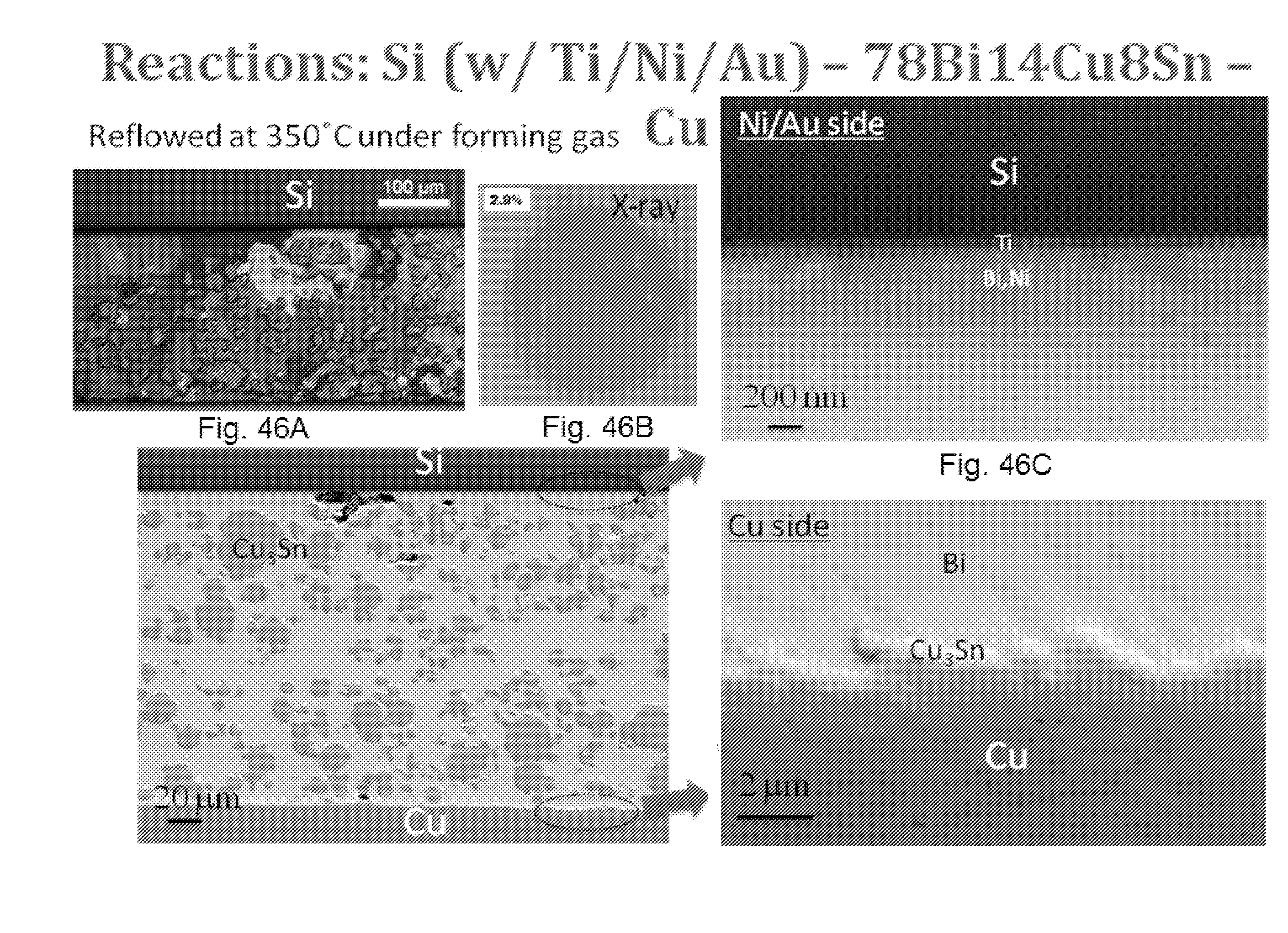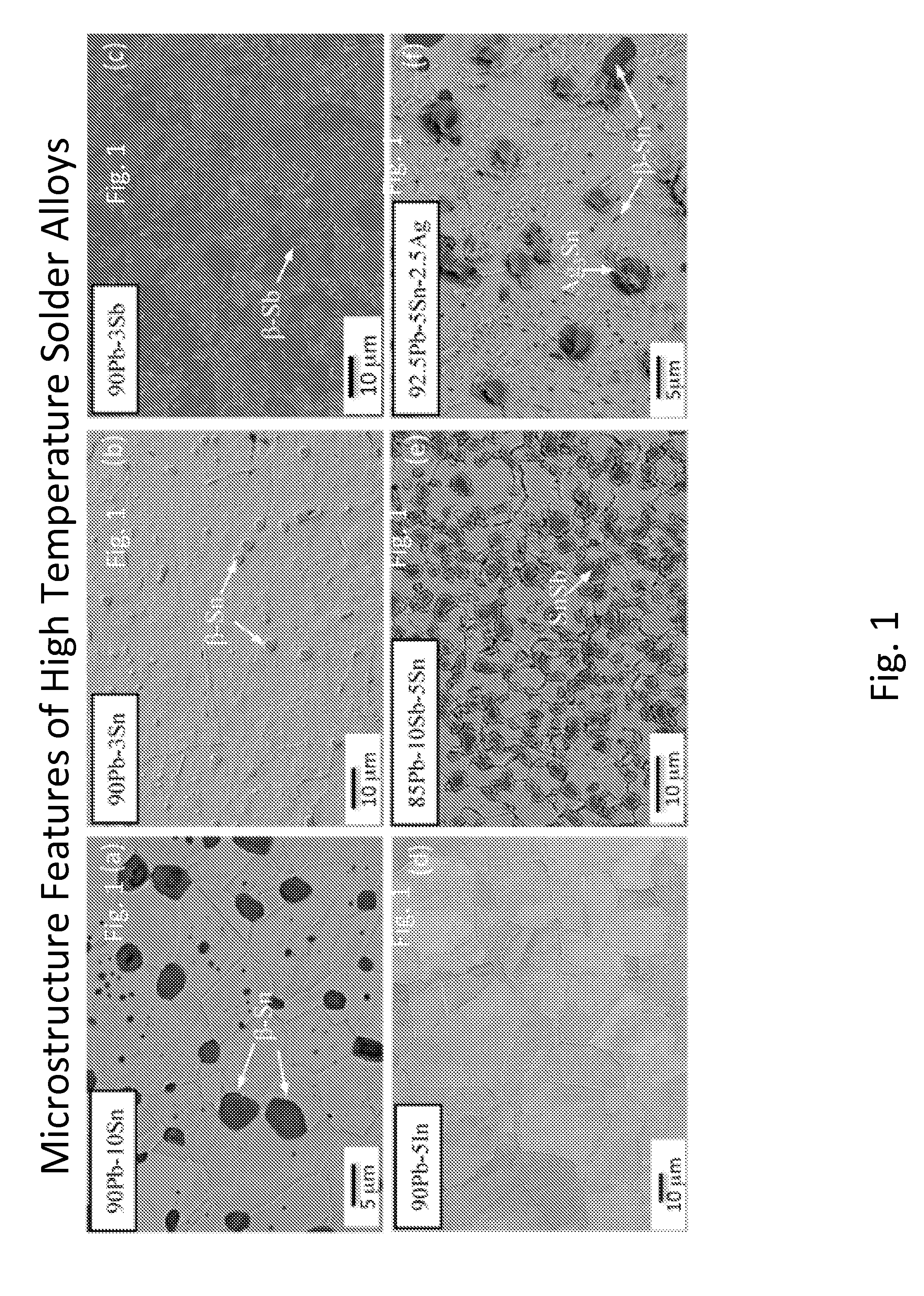Solder alloys
a technology of alloys and solders, applied in the direction of welding/cutting media/materials, solventing apparatus, manufacturing tools, etc., can solve the problems of high-tin (sn) solders that inherently do not work over 200° c, are susceptible to thermal fatigue failure, and other solders such as hard au-containing solders are expensive and other problems, to achieve the effect of increasing the thermal conductivity of the solder according to the present technology
- Summary
- Abstract
- Description
- Claims
- Application Information
AI Technical Summary
Benefits of technology
Problems solved by technology
Method used
Image
Examples
Embodiment Construction
[0083]Table 1 shows properties of various high temperature solders:
TABLE 1High Temperature Solder AlloysLiquidusSolidusSolder AlloysTemp (° C.)Temp (° C.)Notes95Sn 5Sb240235Pb-freeprocess temp >300° C.,soldernot compatible for >200° C.90Sn10Sb272250Pb-freeprocess temp >300° C.,soldernot compatible for >200° C.85Pb10Sb 5Sn255245SuperplasticProcess temp >350° C.,Alloyenvironmental concerns90Pb10Sn301268Single phaseProcess temp >350° C.,aboveenvironmental concerns135° C.92.5Pb 5Sn 2.5Ag296287β-Sn, IMCProcess temp >350° C.,environmental concerns93Pb 3Sn 2Ag2In304—β-Sn, IMC,Process temp >350° C.,solidenvironmental concernssolution92.5Pb 5In 2.5Ag310300IMC, solidProcess temp >350° C.,solutionenvironmental concerns95Pb 5In313300Single phaseProcess temp >350° C.,alloyenvironmental concerns97Pb 3Sb320300β-SbProcess temp >350° C.,environmental concerns97Pb 3In320315Single phaseProcess temp >350° C.,alloyenvironmental concerns97Pb 3Sn321315β-SnProcess temp >350° C.,environmental concerns78Bi14...
PUM
| Property | Measurement | Unit |
|---|---|---|
| solidus temperature | aaaaa | aaaaa |
| solidus temperature | aaaaa | aaaaa |
| liquidus temperature | aaaaa | aaaaa |
Abstract
Description
Claims
Application Information
 Login to View More
Login to View More - R&D
- Intellectual Property
- Life Sciences
- Materials
- Tech Scout
- Unparalleled Data Quality
- Higher Quality Content
- 60% Fewer Hallucinations
Browse by: Latest US Patents, China's latest patents, Technical Efficacy Thesaurus, Application Domain, Technology Topic, Popular Technical Reports.
© 2025 PatSnap. All rights reserved.Legal|Privacy policy|Modern Slavery Act Transparency Statement|Sitemap|About US| Contact US: help@patsnap.com



